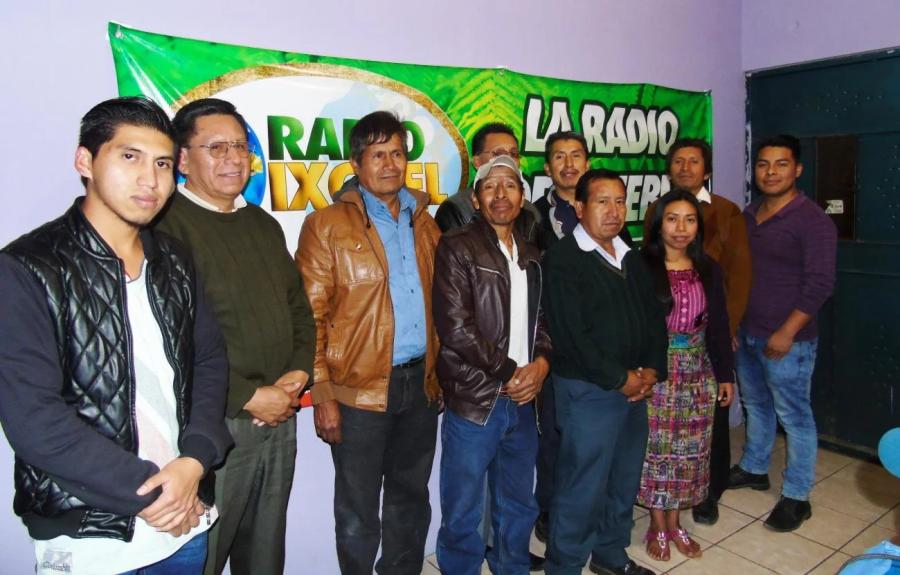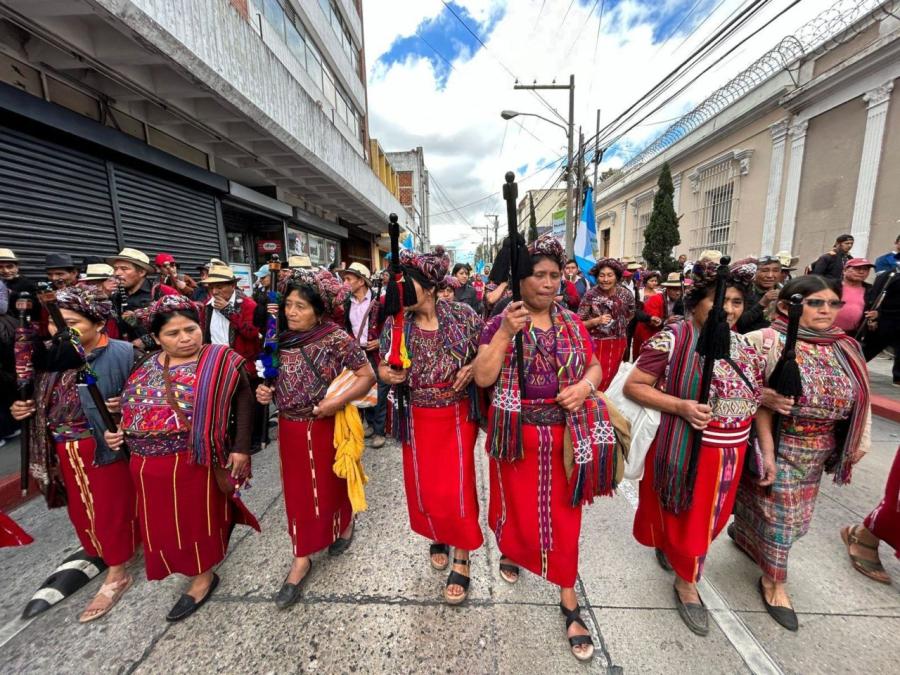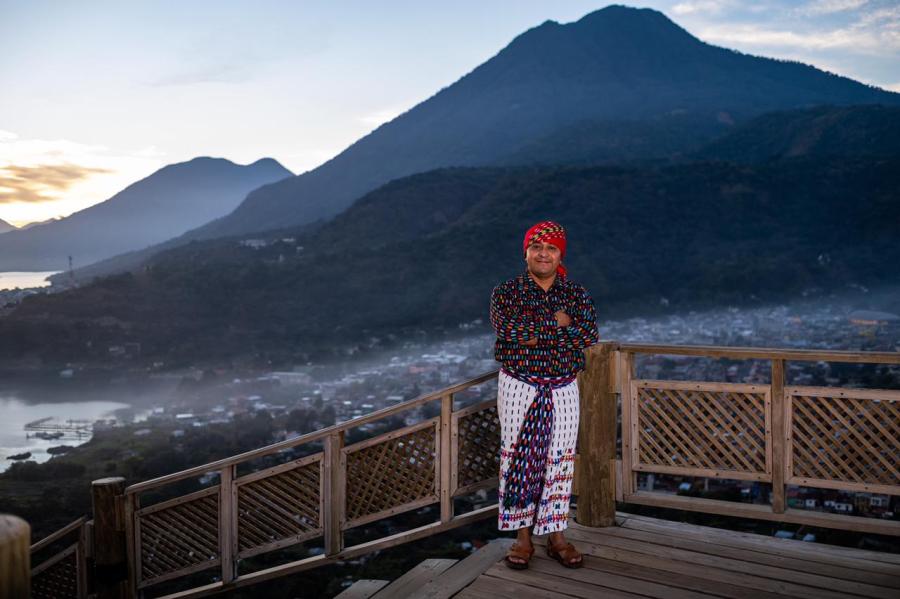While much has been written about the current situation of Indians in Guatemala, less attention has been focused on the 100,000 Guatemalans who have fled into Mexico, clustering in over 90 camps along the length of the Mexican-Guatemalan border in Mexico's southernmost state of Chiapas. These camps are closed to all foreigners, especially journalists, therefore perpetuating the lack of available information. As the violence has surged again in Guatemala, these restraints have grown even stricter. Now access to the camps is limited to sneaking in at nightfall when immigration agents patrol less frequently.
One of the first things discovered in the camps is that fewer refugees are arriving in Mexico as the Guatemalan army has increased its border patrols and taken greater hold of the villages in the north through the civil patrols. With military patrols present in each village, it is impossible for large groups to flee. The attitude in Guatemala is that the refugees are all guerrillas. As a Guatemalan sergeant explained, "The people who are doing things outside the law run away, but the people who aren't doing anything, they stay...when they run and go into the mountains, we are obligated to kill them." Thus most refugees have already been in the camps for at least a year and do not plan to return soon.
The refugees are quick to explain that the army kills randomly, and often massacres whole villages including men, women, and children. Refugees in the Montebello area speak of whole villages leaving for Mexico after some 300 people were killed by the army at Finca San Francisco in July 1982. "We didn't know if our village would be next," one refugee leader said. Most refugees arrive in Mexico being neither for nor against the guerrillas, but none arrive sympathetic to the Guatemalan army. Thus they are branded guerrillas and cannot return.
The major fear in the refugee camps is of incursions by the Guatemalan army across the Mexican border into the camps. In the 18 months that these camps in Mexico have existed, many people have been killed by the Guatemalan army, and recently a Guatemalan army helicopter flew over one camp dropping hand grenades. One guerrilla source said that refugees sympathetic to their cause do not fight in Guatemala because they must protect the camps. The Mexican government is moving one jungle camp they feel to be in such danger. Mexico's lack of any real military presence along its southern border, and lack of any response to Guatemalan incursions, reveals its cautious attitude - Mexico does not want a war with Guatemala.
The Mexican government agency responsible for the refugees is called COMAR (Mexican Commission for Aid to the Refugees). Based in Mexico City with offices near the camps, its role is to distribute mostly U.N.-provided emergency food to Guatemalan refugees. Though its record has improved, its ability to provide assistance, let alone protection, for the refugees is often abyssmal. For example, three camps surveyed in February of 1984 showed that during the three previous months they had received a total of 1 kg. dried fish, 2 kg. dried beans, 1 kg. powdered milk, and 12 kg. of corn meal per person, an amount insufficient for even two weeks.
COMAR told the refugees this food shortage was due to a lack of U.N. funds and corn in southern Mexico. At that time, however, farmers in the area had just harvested a bumper crop of corn; warehouses could not hold all of it. The U.N. delegation confirmed that there was no funding shortage to COMAR. Allegations by local Mexicans that corruption in Mexico City was the reason for the shortage seemed to be confirmed when the COMAR agency head was fired.
Guatemalan refugees are almost totally dependent on this sporadic and insufficient food aid from COMAR - they are not allowed to plant crops in Mexico. Though some farm secretly, the government is cracking down on violations of this ban, leaving the refugees hungry and susceptible to disease. The children especially, according to Catholic church doctors working in the camps, are malnourished, with their parents often spending days in the jungle scrounging for edible green leaves. The refugees, who could become self-sufficient by planting community gardens, are not even allowed to rent land for planting. Mexicans renting land can be thrown in jail.
Though the Mexican government does not prohibit the refugees from working, they cannot leave their camps to look for work. When work can be found near the camps, the government has mandated that they cannot be paid more than 100 pesos per day ($.60), one-third the minimum wage for Mexican laborers. This policy has in effect created an unofficial minimum wage in the area and, as a result, tensions within mixed communities of Guatemalans and Mexicans. Local authorities anticipate the possibility of a general strike by both refugees and Mexicans for higher wages.
As attention has been somewhat focused on the refugees, the poor Mexicans in the area, largely forgotten, are experiencing their own crisis. In a two-week period in February, 1984, three children died of malnutrition in a UNICEF clinic near the camps. Two of these children were Mexican. Although the Mexican government has had a program of land reform for years and has currently instituted a large scale development program for Chiapas, Mexicans realize that Chiapas is still a fertile ground for revolution. One priest commented that "Mexico is what Guatemala was like 10 years ago." The Mexican immigration agency patrols the camp areas, and there have been numerous reports of human rights abuses.
Mexico continues to prohibit any international relief organizations from working in the camps, even though COMAR has been unable to fulfill its role. Many who have attempted to help independently have been told to leave Mexico or, in some cases, have been deported. Journalists can enter the camps with permission from Mexico City, but such permission is rarely granted. Fact-finding missions are often followed and harassed. There is much effort to be sure that little news comes out of the camps or support goes in.
The Mexican government tells international agencies to funnel money for the refugees through the government, but few are willing to do so because of the corruption. Most organizations in the U.S. are also fearful of going against U.S. policy by sending aid. Other than COMAR, only two Mexican organizations have worked with the refugees: CARGUA, a small grassroots organization based in San Cristobal, and the Catholic Church. Both have been harassed, but both have continued their work. About a year ago the Mexican government expelled the Catholic Church from the camps, but the Archbishop of San Cristobal raised such an outcry that the Mexican government finally backed down and has allowed them to continue to work in the camps. Both groups attempt to supplement the meager rations of COMAR with more nutritious food. The Catholic Church, expecting the refugees to be in the area for some time, has tried to respond with long-term aid - the establishment of cooperatives, schools, and churches.
Unlike the United States, Mexico grants refugee status to the Guatemalans, but is under great pressure from the U.S. to keep them from heading north, where they are deported when found. Though many organizations have documented the human rights violations in Guatemala, the State Department continues to consider Guatemalans as economic refugees, i.e. not fleeing any form of real danger. While the Mexican government is willing to let the refugees stay in Mexico for the time being, the government does not want them there for long. Currently negotiations are underway between Mexico and Guatemala for repatriation of the refugees, though with the increase in fighting in Guatemala, it seems unlikely that Mexico would consider it safe to send back the refugees, since they would come under great international pressure if anything were to befall the refugees upon their return.
The refugees pose real problems for Mexico. The country is financially strapped and cannot afford to feed them. Mexico is also fearful of offending the U.N. and the U.S. Therefore refugees, until the last weeks, have been restricted to the border area: news from them is restricted. While Mexico would prefer to just sent the refugees back to Guatemala, fearing an international outcry, the government has chosen to act as though the refugees weren't there at all. It appears, however, that the refugees may be in Mexico for a long time.
Article copyright Cultural Survival, Inc.




